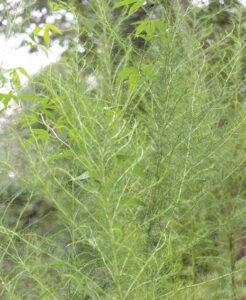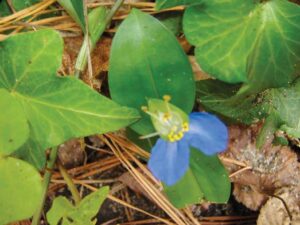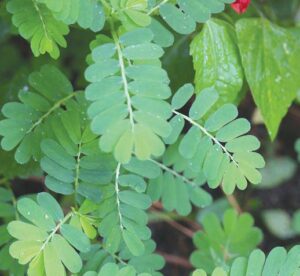The U.S. Department of Interior Bureau of Land Management describes a “weed” as any plant growing where it is not wanted. Weeds can be native or non-native, invasive or noninvasive, and noxious or not noxious.
Ralph Waldo Emerson had a different definition, “What is a weed? A plant whose virtues have not yet been discovered.”
Many weeds entered the U.S. from Eurasia and were transported by accident or by intent. Accidental transport occurred in the ballast of ships, in the hair of livestock and in clothing, and contaminants in seed lots. Some weeds came in as dyes, medicines, and ornamental plants.
I inventoried the weeds in my garden in August and suspect many local gardeners would find the same. Along the edge of my butterfly garden is a colony of chamberbitter (Phyllanthus urinaria) aka gripeweed, an Asian native summer annual that expels prodigious seed from the fruit. Pulling up seedlings by hand is easy to do. On one end of the butterfly garden is a six-foot tall cluster of native camphorweed (Heterotheca subaxillaris), an annual herbaceous plant in the Aster family with bright yellow ray florets and orange disk florets. The hairy stems, curving leaves, and camphor medicinal odor when the plant is bruised help identify this fall-flowering plant.
The centipede grass hosts Florida pusley (Richardia scabra), a drought tolerant summer annual with pretty, white star-shaped flowers that quickly produce tons of seeds. According to Clemson Extension lawns with a large colony of Florida pusley could indicate the soil is infested with nematodes, a microscopic worm that attacks the roots of grass. Baldwin’s flat sedge (Cyperus croceus), a southeastern native perennial is also in the lawn. This sedge is used in architectural landscaping at the edges of ponds and water features. Its tall stems and grass-like leaves make an impressive display.
Along the moist edges of the property one finds the Asiatic dayflower (Commelina communis) so named because the blue blooms only last one day. It is considered a weed in its native Asia home as well as in Europe and North America.
Dog fennel (Eupatorium capillifolium) is a six to eight-foot tall wispy feathery leaved perennial. The leaves produce a pungent odor when crushed. Some people use the crushed leaves as an insect repellent believing it repels mosquitoes.
Common Yellow Wood Sorrel (Oxalis stricta) is a native upright herbaceous perennial with hairy stems and a deep taproot. Bright yellow flowers have five petals. Each leaf is divided into three heart-shaped leaflets resembling clover leaves.
As an organic gardener I use natural and preventative strategies to control weeds including hand weeding, mulching, and soil solarization.
The CobraHead® hand weeder and cultivator is a top-notch tool for sustainable gardening. www.cobrahead.com.






Loading Comments